Gwendolyn Brown, contralto
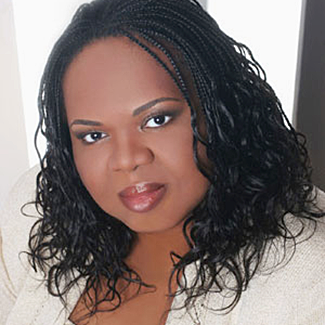
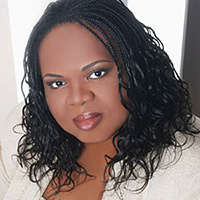
Contralto Gwendolyn Brown’s operatic performances of traditional, 20th century, American Art Song, Negro Spiritual and even the avant-garde has earned her consistent critical acclaim. Gwendolyn Brown’s “deep contralto “showed astonishing range and timbre, a stern voice of certainty.” (Huddersfield Examiner) and she is hailed as “a transfixing force of nature” (Mark Swed, LA Times).
Ms. Brown’s recent performances in George Lewis’s new opera Afterword: The AACM (as) Opera were met with critical acclaim in the US and abroad. Other critically acclaimed highlights of contemporary works include creating the lead role of Marie Laveau, in Ann LeBaron’s Crescent City for Los Angeles’ The Industry.
Ms. Brown has performed for many of the top opera companies and orchestras throughout the United States as well as in Australia, Germany, Italy, Spain, Amsterdam and Brussels. She has received critical acclaim in character roles including the Principessa in Suor Angelica and Zita in Gianni Schicci. She has performed her signature role of Maria in Porgy and Bess with the Lyric Opera of Chicago, Seattle Opera, Boston Symphony Orchestra, Toronto Symphony Orchestra, and Washington National Opera as well as in Germany, Amsterdam, Brussels and recently for the Sydney Symphony Orchestra.
Originally from Memphis, TN, Gwendolyn Brown studied music at Fisk University, the University of Memphis and the American Conservatory of Music. She participated in the young artist programs of Des Moines Metro Opera and Lyric Opera of Chicago Center for American Artists.
Ms. Brown is Assistant Professor of Music at her alma mater Fisk University.
Graham Haynes, cornet and flugelhorn
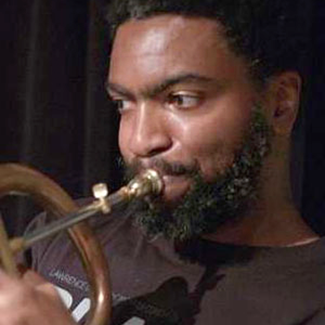
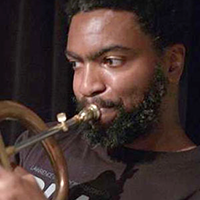 Graham Haynes is an American cornetist, trumpeter and composer. The son of jazz drummer Roy Haynes,[1] Graham is known for his work in nu jazz, fusing jazz with elements of hip hop and electronic music.
Graham Haynes is an American cornetist, trumpeter and composer. The son of jazz drummer Roy Haynes,[1] Graham is known for his work in nu jazz, fusing jazz with elements of hip hop and electronic music.
With aspirations to push jazz beyond its traditional boundaries, Graham Haynes’ first foray into electronic music came in 1979 upon meeting alto saxophonist Steve Coleman. Together, they formed a band called Five Elements, which launched an influential group of improvisers called M-Base Collective. After the formation of his own ensemble – Graham Haynes and No Image – and the subsequent release of an album (What Time It Be?), Haynes would spend the balance of the 1980s studying a wide range of African, Arabic and South Asian Music. After a move to France in 1990, Haynes incorporated these far-off influences into his next two releases – Nocturne Parisian and Griot’s Footsteps.
Helga Davis, soprano
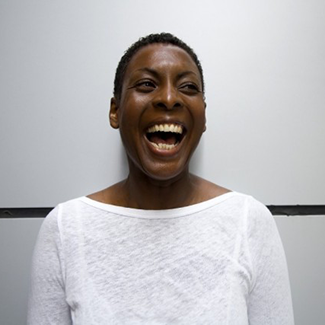
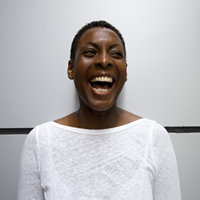 Helga Davis served as a principle actor in the 25th-anniversary international revival of Robert Wilson and Philip Glass’s seminal opera Einstein on the Beach. Her appearance in You Us We All by Shara Nova (My Brightest Diamond) and Andrew Ondrejcak marked her fifth at the Brooklyn Academy of Music’s Next Wave Festival.
Helga Davis served as a principle actor in the 25th-anniversary international revival of Robert Wilson and Philip Glass’s seminal opera Einstein on the Beach. Her appearance in You Us We All by Shara Nova (My Brightest Diamond) and Andrew Ondrejcak marked her fifth at the Brooklyn Academy of Music’s Next Wave Festival.
Among the many works written for her are Faust’s Box, written and directed by acclaimed Italian contemporary music composer Andrea Liberovici; Oceanic Verses by Paola Prestini, with libretto by Donna DiNovelli and video by Ali Houssani; Elsewhere by Missy Mazzoplli and Maya Beiser; and The Blue Planet, a multi-media theater piece written by Peter Greenaway and directed by Saskia Boddeke. She was also the co-star of The Temptation of St. Anthony directed by Robert Wilson, with libretto and score by Bernice Johnson Reagon of Sweet Honey in the Rock.
Mark Shim, tenor saxophone
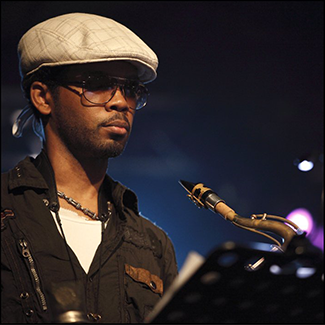
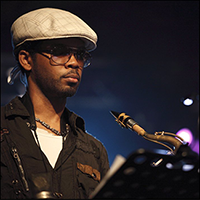
Born in Kingston, Jamaica, saxophonist Mark Shim moved to Canada then later settled in Richmond, Virginia. He started on saxophone in seventh grade, graduating from high school in 1991 and attending Virginia Commonwealth University and William Paterson College. In 1994 he moved to Brooklyn, where he played and recorded with Hamiett Bluiett in Harlem. He then played with Mose Allison, Betty Carter, Greg Osby, and the Mingus Big Band.
Shim’s debut recording Mind Over Matter (Blue Note, 1998) was followed by New Directions , a young group project, that included Osby, Jason Moran, and Stefon Harris and then his second recording as a leader, the outstanding Turbulent Flow, both released on Blue Note in 2000.
With a unique deep timbre and chops that range from swinging bop, uncut funk, to avant-garde, Shim continues to perform, record, and tour with artists such as Delfeayo Marsalis, Carmen Lundy, The Headhunters, Michele Rosewoman, Liberty Ellman, and Steve Lehman.
Roscoe Mitchell, winds
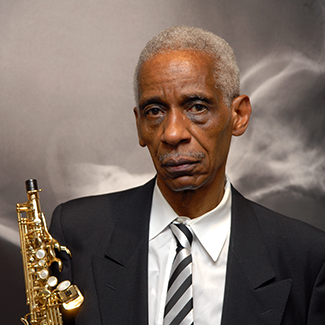
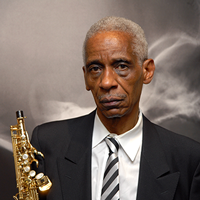 Internationally renowned musician, composer, and innovator, began his distinguished career in the spirited 1960s of Chicago, Illinois. His role in the resurrection of long neglected woodwind instruments of extreme register, his innovation as a solo woodwind performer, his and his reassertion of the composer into what has traditionally been an improvisational form have placed him at the forefront of contemporary music for over four decades. A leader in the field of avant-garde jazz and contemporary music, Mr. Mitchell is a founding member of the world renowned Art Ensemble of Chicago, the Association for the Advancement of Creative Musicians, and the Trio Space.
Internationally renowned musician, composer, and innovator, began his distinguished career in the spirited 1960s of Chicago, Illinois. His role in the resurrection of long neglected woodwind instruments of extreme register, his innovation as a solo woodwind performer, his and his reassertion of the composer into what has traditionally been an improvisational form have placed him at the forefront of contemporary music for over four decades. A leader in the field of avant-garde jazz and contemporary music, Mr. Mitchell is a founding member of the world renowned Art Ensemble of Chicago, the Association for the Advancement of Creative Musicians, and the Trio Space.
Muhal Richard Abrams, piano
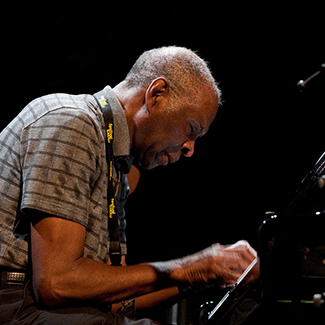
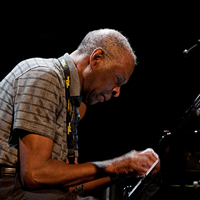 Muhal Richard Abrams has been in the forefront of the contemporary music scene for well over forty years. Muhal is a co-founder of The Association for the Advancement of Creative Musicians (AACM), founder of The AACM School of Music and President of The Association for the Advancement of Creative Musicians, New York City Chapter. Muhal was the first recipient of the grand international jazz award, “The Jazzpar Prize”, which was awarded to him in 1990 by the Danish Jazz Center in Copenhagen, Denmark.. In 1999 Muhal was presented a proclamation by Richard M. Daley, Mayor of the City of Chicago, declaring April 11, 1999 as Muhal Richard Abrams Day in Chicago.
Muhal Richard Abrams has been in the forefront of the contemporary music scene for well over forty years. Muhal is a co-founder of The Association for the Advancement of Creative Musicians (AACM), founder of The AACM School of Music and President of The Association for the Advancement of Creative Musicians, New York City Chapter. Muhal was the first recipient of the grand international jazz award, “The Jazzpar Prize”, which was awarded to him in 1990 by the Danish Jazz Center in Copenhagen, Denmark.. In 1999 Muhal was presented a proclamation by Richard M. Daley, Mayor of the City of Chicago, declaring April 11, 1999 as Muhal Richard Abrams Day in Chicago.
Except for a brief period of study at Chicago Musical College and Governors State University in Chicago, Illinois where he studied electronic music, Mr. Abrams is predominately a self-taught musician who, as a result of many years of observation, analysis, and practice as a performing musician, has developed a highly respected command of a variety of musical styles both as a pianist and composer. The versatile Mr. Abrams and members of The AACM are responsible for some of the most original new music approaches of the last three decades.
Rudresh Mahanthappa, alto saxophone, composer
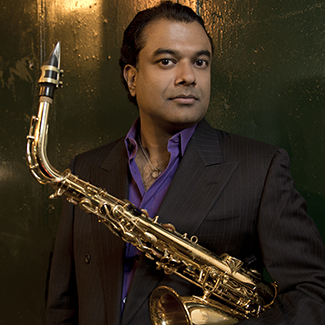
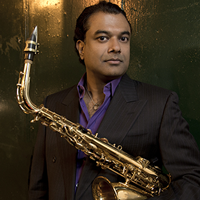 RUDRESH MAHANTHAPPA
RUDRESH MAHANTHAPPA
Few musicians share the ability of alto saxophonist/composer Rudresh Mahanthappa to embody the expansive possibilities of his music with his culture. What has materialized is a sound that hybridizes progressive jazz and South Indian classical music in a fluid and forward-looking form that reflects Mahanthappa’s own experience growing up a second-generation Indian-American. The current manifestations of that trajectory include his latest project Bird Calls (2015), which was named #1 album of the year by both Downbeat and NPR Music’s Jazz Critics Poll.
Hailed by the New York Times as possessing “a roving intellect and a bladelike articulation,” Mahanthappa has been awarded a Guggenheim Fellowship, a New York Foundation for the Arts Fellowship, and commissions from the Rockefeller Foundation MAP Fund, Chamber Music America and the American Composers Forum. He has been named alto saxophonist of the year for three years running in Downbeat Magazine’s International Critics’ Polls (2011-2013) and again in 2015 and 2016, and for five years running by the Jazz Journalists’ Association (2009-2013) and again in 2016. He won alto saxophonist of the year in the 2016 JazzTimes Magazine Critics’ Poll. In April 2013, he received a Doris Duke Performing Artist Award, one of the most prominent arts awards in the world. In 2015, he was named a United States Artists Fellow. In 2016, he was named the Director of Jazz and the Associate Director of the Program in Musical Performance at Princeton University.
Mahanthappa is a Yamaha artist and uses Vandoren reeds exclusively.
RUDRESH MAHANTHAPPA SOCIAL MEDIA LINKS
WEBSITE:
http://rudreshm.com/
ACT RECORDS WEBSITE PAGE (HI RES PHOTOS/EPK):
https://www.actmusic.com/en/Artists/Rudresh-Mahanthappa
https://www.actmusic.com/en/Artists/Rudresh-Mahanthappa/(presse)/20319
YOUTUBE:
http://www.youtube.com/rudreshm
TWITTER:
https://twitter.com/rudreshm
FACEBOOK:
https://www.facebook.com/rudreshm
Jen Shyu, performer/composer
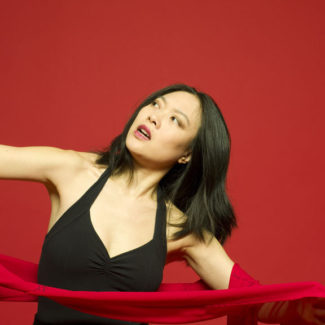
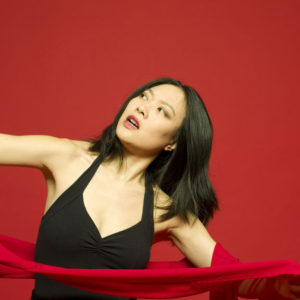 Born from Taiwanese and East Timorese immigrant parents, 2016 Doris Duke Artist Jen Shyu (Chinese name: 徐秋雁) is an experimental jazz vocalist, composer, multi-instrumentalist, dancer, producer, and Fulbright scholar. Known mostly for her virtuosic singing with saxophonist and 2014 MacArthur Genius Fellow Steve Coleman since 2003 and having collaborated with innovators Anthony Braxton, Bobby Previte, Chris Potter, Michael Formanek, and David Binney to name a few, she has performed her own music around the world in such venues as Carnegie Hall, Lincoln Center, Brooklyn Academy of Music, Metropolitan Museum of Art, Rubin Museum of Art, Ringling International Arts Festival, Asia Society, Roulette, Blue Note, Bimhuis, Salihara Theater, National Gugak Center, and National Theater of Korea and festivals around the world.
Born from Taiwanese and East Timorese immigrant parents, 2016 Doris Duke Artist Jen Shyu (Chinese name: 徐秋雁) is an experimental jazz vocalist, composer, multi-instrumentalist, dancer, producer, and Fulbright scholar. Known mostly for her virtuosic singing with saxophonist and 2014 MacArthur Genius Fellow Steve Coleman since 2003 and having collaborated with innovators Anthony Braxton, Bobby Previte, Chris Potter, Michael Formanek, and David Binney to name a few, she has performed her own music around the world in such venues as Carnegie Hall, Lincoln Center, Brooklyn Academy of Music, Metropolitan Museum of Art, Rubin Museum of Art, Ringling International Arts Festival, Asia Society, Roulette, Blue Note, Bimhuis, Salihara Theater, National Gugak Center, and National Theater of Korea and festivals around the world.
Explore 2017 Festival Artists on Spotify
Prepare for June by listening to upcoming Festival artists using our Spotify playlists.
Sitting In with Vijay Iyer
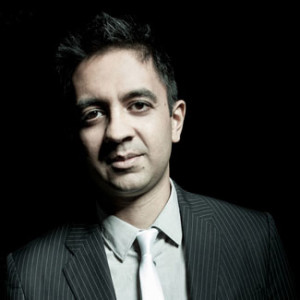 Back in 1992 Vijay Iyer, studying physics at UC Berkeley and living in Oakland, crossed the street to check out the music in a neighborhood club. Before long the young graduate student and largely self-taught jazz pianist was sitting in with a cohort of local elder statesmen, three and four times his age. Music had already begun to dominate Vijay’s interests, but those evenings in the Bird Kage club taught him something more: his creative juices began to flow when curiosity overcame diffidence, and wariness gave way to mutual trust. Ever since, he has been crossing streets and sitting in, finding his place in a succession of vibrant musical communities.
Back in 1992 Vijay Iyer, studying physics at UC Berkeley and living in Oakland, crossed the street to check out the music in a neighborhood club. Before long the young graduate student and largely self-taught jazz pianist was sitting in with a cohort of local elder statesmen, three and four times his age. Music had already begun to dominate Vijay’s interests, but those evenings in the Bird Kage club taught him something more: his creative juices began to flow when curiosity overcame diffidence, and wariness gave way to mutual trust. Ever since, he has been crossing streets and sitting in, finding his place in a succession of vibrant musical communities.
Vijay Iyer likes thinking about communities – where you find them, how they are formed, what cultural expressions they create. And what they create is very much a question of how they listen. The communities Iyer has found create music through improvisation – listening, thinking, weighing options, making decisions, finding ways to open new doors, or, as he likes to put it, “responding to crisis.” So from jamming with friends and strangers, seeking out mentors, and studying the masters he has developed his own distinctive musical personality combining expressive warmth with dazzling inventiveness. In the meantime, his academic interests turned toward the cognitive science of music: questions about how we listen, how we make music, and how we interpret what we hear. For Iyer, a MacArthur Fellow and Harvard professor, music is both emotional and intellectual, visceral and analytical, an activity whose structure and syntax are deeply imbedded in our shared humanity and cultural experience.
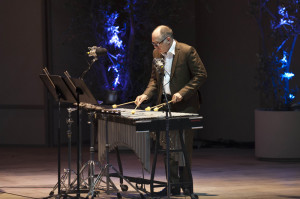 For all his celebrity, he is remarkably self-effacing and in conversation devotes a good deal of time speaking about others – celebrated idols, cherished teachers, treasured colleagues, admired contemporaries to whom he feels indebted. It is therefore no surprise that his selection of artists for this year’s festival is both multi-generational and deeply personal: “people who are dear to me – each has changed my life.” People like the cellist Okkyung Lee and choreographer Michelle Boulé (“visceral, awe-inspiring”), Steven Schick (“a transformative influence”), or Roscoe Mitchell (“completely changed my idea of what music can be”) – musicians who have inspired, challenged, and even confounded him.
For all his celebrity, he is remarkably self-effacing and in conversation devotes a good deal of time speaking about others – celebrated idols, cherished teachers, treasured colleagues, admired contemporaries to whom he feels indebted. It is therefore no surprise that his selection of artists for this year’s festival is both multi-generational and deeply personal: “people who are dear to me – each has changed my life.” People like the cellist Okkyung Lee and choreographer Michelle Boulé (“visceral, awe-inspiring”), Steven Schick (“a transformative influence”), or Roscoe Mitchell (“completely changed my idea of what music can be”) – musicians who have inspired, challenged, and even confounded him.
Today Vijay inhabits a post-genre world, and Ojai 2017 will no doubt challenge and confound our notions of music. The familiar – Bach’s Art of the Fugue, Stravinsky’s Rite of Spring (in a new arrangement for 12 players) – are juxtaposed with his Time, Place, Action for quartet and piano, Emergence for piano trio and orchestra, and his score to Prashant Bhargava’s Radhe Radhe: Rites of Holi, a cinematic refraction of the Indian festival of Holi, created for the centennial of Stravinsky’s iconic Rite. We’ll also hear a newly commissioned violin concerto for Jennifer Koh, and performances by some of the foremost improvisers of today, including three legends: Wadada Leo Smith, Roscoe Mitchell, both in their 70s, and pianist Muhal Richard Abrams, now 86 – living exemplars of generational transmission, a reminder of the “real education” Iyer received when he sought out musicians “older, better, wiser than me.”
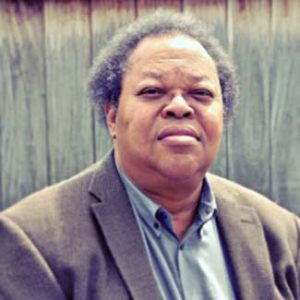 Smith, Mitchell, and Abrams, emerging from the African American musical movements of the 1950s and 60s – its patron saints included the likes of Coltrane, Mingus, Ornette Coleman, and Thelonious Monk – have in turn shaped the scene of the last fifty years, not least through their activities with the Association for the Advancement of Creative Musicians (AACM), which they co-founded in 1965 in Chicago. We’ll hear Afterword, an opera about the group’s origins by the composer George Lewis, whose research and creative work (we heard The Will to Adorn in 2015) often explore the relationships among music, community, and the self. We’ll also hear a Lewis protégée, the young composer Courtney Bryan, whose work Yet Unheard for soprano, orchestra, and choir, with libretto by poet Sharan Strange, explores the current moment; the piece conjures the soul and spirit of Sandra Bland, whose unexplained death in police custody in Texas has become one of many tragedies motivating the Black Lives Matter movement.
Smith, Mitchell, and Abrams, emerging from the African American musical movements of the 1950s and 60s – its patron saints included the likes of Coltrane, Mingus, Ornette Coleman, and Thelonious Monk – have in turn shaped the scene of the last fifty years, not least through their activities with the Association for the Advancement of Creative Musicians (AACM), which they co-founded in 1965 in Chicago. We’ll hear Afterword, an opera about the group’s origins by the composer George Lewis, whose research and creative work (we heard The Will to Adorn in 2015) often explore the relationships among music, community, and the self. We’ll also hear a Lewis protégée, the young composer Courtney Bryan, whose work Yet Unheard for soprano, orchestra, and choir, with libretto by poet Sharan Strange, explores the current moment; the piece conjures the soul and spirit of Sandra Bland, whose unexplained death in police custody in Texas has become one of many tragedies motivating the Black Lives Matter movement.
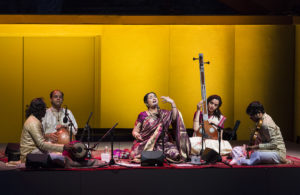 Vijay self-identifies as a composer, but he also places a lot of faith in real-time music-making. In Ojai he’ll play duets with the aforementioned trumpeter-composer Wadada Leo Smith, and he will also make music with two of today’s foremost Indian classical performers: Carnatic vocalist Aruna Sairam (who mesmerized in her 2015 Ojai debut) and pioneering tabla legend Zakir Hussain. The thrill of the musical moment is also why Iyer is so excited by Tyshawn Sorey (“one of the greatest living musicians – period”), whose Perle Noire: A Portrait of Josephine Baker was a highlight of last year’s Ojai Festival. This year Tyshawn will appear as a featured percussionist throughout the festival, and will present his own, uncategorizable music for Double Trio. Also, in a special program, Sorey will lead members of International Contemporary Ensemble using a technique called “conduction,” a process that exemplifies what Iyer values most in music: a community forged through listening. For Iyer it’s all a matter of trust, though not in the sense of a safe space, but a space for shared daring. Whether responding to the intricate systems of Indian music, the technique of orchestral composition, or the challenges of ensemble improvisation, Vijay is looking for expressive frontiers, “to put ourselves at maximum creative risk whenever possible.”
Vijay self-identifies as a composer, but he also places a lot of faith in real-time music-making. In Ojai he’ll play duets with the aforementioned trumpeter-composer Wadada Leo Smith, and he will also make music with two of today’s foremost Indian classical performers: Carnatic vocalist Aruna Sairam (who mesmerized in her 2015 Ojai debut) and pioneering tabla legend Zakir Hussain. The thrill of the musical moment is also why Iyer is so excited by Tyshawn Sorey (“one of the greatest living musicians – period”), whose Perle Noire: A Portrait of Josephine Baker was a highlight of last year’s Ojai Festival. This year Tyshawn will appear as a featured percussionist throughout the festival, and will present his own, uncategorizable music for Double Trio. Also, in a special program, Sorey will lead members of International Contemporary Ensemble using a technique called “conduction,” a process that exemplifies what Iyer values most in music: a community forged through listening. For Iyer it’s all a matter of trust, though not in the sense of a safe space, but a space for shared daring. Whether responding to the intricate systems of Indian music, the technique of orchestral composition, or the challenges of ensemble improvisation, Vijay is looking for expressive frontiers, “to put ourselves at maximum creative risk whenever possible.”
And he’s inviting us to sit in.
BRAVO Leadership Change: Welcome Sandra Shapiro and Merrill Williams
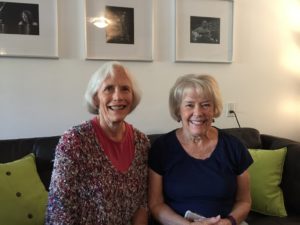 The Ojai Music Festival is pleased to announce Sandra Shapiro and Merrill Williams as new co-chairs of the BRAVO Education Committee. Both Sandra and Merrill are excited to help the program in bringing music programs to school children throughout the Ojai Valley, including Music Van, the Imagine concert, Chumash Music and Culture, Education Through Music (ETM), and the Upbeat Percussion Workshops at Continuing Care Centers.
The Ojai Music Festival is pleased to announce Sandra Shapiro and Merrill Williams as new co-chairs of the BRAVO Education Committee. Both Sandra and Merrill are excited to help the program in bringing music programs to school children throughout the Ojai Valley, including Music Van, the Imagine concert, Chumash Music and Culture, Education Through Music (ETM), and the Upbeat Percussion Workshops at Continuing Care Centers.
Sandra Shapiro has lived in Ojai for ten years. As a nurse, she has experience working with new mothers in the post-partum field, as well as in school health. She is currently on the Board of the Nan Tolbert Nurturing Center, a family-directed outreach program to help families with support, education, and emotional care and served as a past president. Sandra has been an active member of the Ojai Festivals Women’s Committee for five years.
Sandra says about the BRAVO program, “This is something that draws people to be a part of supporting the Festival. It is our greater hope, desire, and awareness that children thrive when exposed to and included in musical participation. They have an appreciation of the expressive culture. Music also builds confidence, brain skills in mathematics and logic and the chance for self-expression. This translates into greater confidence and ultimately better citizens. Music and the arts are part of the powerful, ineffable sphere of the human experience.”
Merrill Williams has lived in Ojai for 44 years. Part of her extensive background in marketing and publicity was working for the Ojai Valley Inn and Spa for 15 years as Public Relations Director. There she worked closely with the national and international press. A long-time Festival subscriber, Merrill recently served as past president of the Ojai Festivals Women’s Committee and joined the Festival’s Board of Director in September. Merrill comes from a musical family; her mother was an arranger who specialized in women’s choral music. She would also lead choirs on tours to local schools and prisons. Merrill is firmly aware of the importance of music to our youth, and to society.
For more information on the Ojai Music Festival’s BRAVO education in the schools and community, click here. If you are interested in the BRAVO committee, a voluntary group that meets once a month, contact Laura Walter at 805 646 2094.
Want to help the program? Join us at the Ojai Holiday Home Tour & Marketplace, November 12 and 13, a major fundraiser for the BRAVO education programs!
Why does L.A. need its own summer classical music festival? – LA Times
Why does L.A. need its own summer classical music festival? For answers, look 6,000 miles away
Mark Swed
Read on the LA Times website >>
Download PDF >>
A tale of two exalted European city festivals begins with surprising signifiers. Conspicuously tacked on a press office bulletin board at the tony Salzburg Festival is a large photo of John Cage. The leading 20th century anti-establishment American artist is — at least in this small Salzburg dominion through which artists, writers and administrators regularly pass — a bastion of the classical music establishment.
At that other prestigious address for classical music in summertime, Lucerne, Switzerland, posters and program books are centered with the words PRIMA DONNA in large type, the I being a graphic of a conductor’s baton extending from the manicured red nail of a lady’s right hand, which is encircled by bees. This year’s theme of the Lucerne festival is the empowerment of women in classical music, particularly as composers and conductors.
Outside observers have found such queen bee business a wee bit condescending, but given that parts of Switzerland gave women the vote only in the 1970s, this is a statement. So too is the fact that the artistic director designate of the Salzburg Festival is Austrian pianist Markus Hinterhäuser, a modern music specialist known for his penetrating recordings of John Cage’s New York School.
Social progress can seem slow in this part of the world. Tradition and history weigh heavily on Switzerland and particularly Austria, where you occasionally encounter opera goers in lederhosen.
Standard repertory and standard stars prevail as they always have in both places. Audiences remain well-heeled. As always, the festivals cater to the classical music business; it can be as easy to run into an orchestra manager or artist’s representative in Salzburg or Lucerne as it is a movie producer in Cannes.
Still something startling is in the air. Lucerne celebrated its 75th anniversary in 2013 with the theme “Viva la Revolución” and festival honchos showed up for a gala event wearing Che garb. Salzburg has yet to announce next year’s program, Hinterhäuser’s first season, but Peter Sellars has said that he will be back at the festival for the first time in almost two decades.
Salzburg and Lucerne are special places. As destination festivals, they have lost none of their importance in the Internet age, however much our expectation is that anything that matters is immediately and effortlessly available.
Indeed the website medici.tv has a smattering of this year’s offerings thus far, including a new production of Gounod’s “Faust” in Salzburg and Riccardo Chailly’s compelling performance of Mahler’s Eighth Symphony with the Lucerne Festival Orchestra. As I write, I am listening on the BBC Radio 3 website to a London Proms broadcast of Mirga Grazinyte-Tyla conducting her first program as music director as the City of Birmingham Symphony Orchestra, and with a little imagination I can feel the excitement in the Royal Albert Hall.
But vicarious reality is really equivocal reality. I’m not there, I’m at my keyboard, half listening, fooling myself while allowing Grazinyte-Tyla’s thrilling Tchaikovsky Fourth Symphony to help speed my typing.
A festival, on the other hand, is a concentrated excursion away from the computer and the quotidian. It needn’t always be a special destination. The Proms, the Berlin Festival, Paris Autumn and Prague Spring and other city festivals are primarily for residents. A few small, out-of-the-way American cities have small destination festivals of note — Ojai, close to home, is one. But Lincoln Center Festival in July comes closest to a big international festival of the performance arts, and it has become less ambitious and less provocative than it once was.
What about Los Angeles? As the city weighs the feasibility of its bid for the 2024 Summer Olympics, let us remember what it meant in 1984 when L.A. mounted an Olympic Arts Festival that changed the complexion of performance arts in Los Angeles. Do we have it in us to do it again by, say, reviving the biannual Los Angeles Festival, the follow-up to the Olympic Arts Festival, which lasted only until 1993 and had ambitions to put us in the league with Berlin and Paris?
First, though, it might be worth considering how Salzburg and Lucerne did it, and how what they do now reverberates around the world.
The Salzburg Festival was founded in 1920 in Mozart’s quaint hometown at the foot of the Austrian Alps to be an international outpouring of opera, concerts and theater from the leading artists of the day. The Lucerne Festival came along 18 years later in reaction to Salzburg having become far too appealing to Hitler and his SS contingent. So the adamant anti-Fascist Arturo Toscanini started a festival on the shores of Lake Lucerne at the foot of the Swiss Alps.
Both festivals enhanced their reputations after World War II with star conductors, notably Herbert von Karajan in Salzburg and Wilhelm Furtwängler in Lucerne. Recordings of concerts and operas from the festivals automatically had the stamp of quality. An air of exclusivity wafted over both places as new concert halls and opera houses were built and offerings became more lavish.
Today Lucerne, which is primarily devoted to concert music, has a budget of around $27 million, while Salzburg, which produces opera and theater as well as concerts, boasts a budget more than double that.
That kind of bankrolling (most of which is private support) can, of course, lend an air of exclusivity, which both festivals have worked hard to lessen, while becoming much more expansive. And to that end, they sponsor education projects, foster emerging artists and commission new work. In Salzburg the lasting contribution from this summer is likely to be the premiere of Thomas Adés’ opera, “The Exterminating Angel,” a work meant to challenge the very essence of status quo — shockingly so in its harsh depiction of stymied high society — which will now be done at Royal Opera in London and at the Metropolitan Opera in New York.
I was also stuck by the Salzburg debut of pianist Yuja Wang. She may be on the flashy side for the more conservative audiences, but she couldn’t have been more modestly respectful — or daring — than to step into eminent Salzburgian shoes. At a legendary 1970 song recital here, German baritone Dietrich Fischer-Dieskau and Russian pianist Sviatoslav Richter, two of the most celebrated musicians of their time, performed Brahms’ song cycle “Die Schöne Magelone.” This summer, in the gilded great hall of the Mozarteum, Wang became the steady hand that saved overwrought baritone Matthias Goerne from his excesses and helped signal a new maturity for the 29-year-old pianist.
At Lucerne, a number of worthy women conductors — Grazinyte-Tyla, to be sure, but also the likes of the American big-band jazz leader Maria Schneider and the adventurous Canadian singer-conductor Barbara Hannigan — are getting important exposure. The biggest news, though, is likely to be the contribution from Olga Neuwirth, this year’s composer in residence.
I heard a performance of her impressive recent immersive work, “Le Encantadas,” in which the audience was surrounded by instrumental groups and electronic music from loudspeakers. It is a gripping evocation of the Galapagos, inspired by Herman Melville’s voyage to the South American islands, that revealed an alluring and unsettling strangeness even one of America’s greatest writers could not capture as well.
Now back home. Arguments could be made for and against Los Angeles becoming a major festival city. The Los Angeles Philharmonic, where Grazinyte-Tyla began as a Dudamel fellow and is associate conductor, does an exceptional job promoting young talent and commissioning new work. Schneider was a featured artist five years ago at the Ojai Music Festival; Hannigan will be its music director in 2019. Not all that serves as news on the European festival circuit is necessarily news to visiting Angelenos.
Moreover, much of what was new and exciting in dance and theater at the Olympic Arts Festival, which opened with Pina Bausch, the choreographer then unknown in the U.S., is now regularly presented by the Center for Art of Performance at UCLA and REDCAT. Even so, we are a multicultural city that barely scratches the surface of consequential work created in Europe, Asia, South America and Africa. For that we need a festival.
So what would it take? First of all, money. Michael Haefliger, Lucerne’s visionary executive and artistic director, told me that if L.A. is going to present a festival it would require a large-scale, full-time operation.
Robert Fitzpatrick, the former president of CalArts who created the 1984 Olympic Arts Festival, said that civic enthusiasm is essential to doing something exceptional. “A festival,” he said over the phone from Long Island, N.Y., “has to be a moment of discovery.”
Fitzpatrick reminded me of the fights he had when he wanted to open his follow-up Los Angeles Festival in 1986 with a Canadian circus no one had ever heard of called Cirque du Soleil. They thought he had to be kidding.
For Fitzpatrick money comes once you have the civic support. Then-Mayor Tom Bradley threw the power of City Hall behind the L.A. Festival. That, Fitzpatrick said, opened doors to donors like Lew Wasserman and Barry Diller.
There is cautious talk coming from the Music Center about an ambitious summer festival, employing its underused-in-the-summer campus, Grand Park and, I would hope, a host of potential venues around downtown. But festivals must be big and bold to matter. Let the talk turn to shouting into loudspeakers at whatever volume is necessary to drown out downtown construction and penetrate the thick walls of the nearby county and city offices.
‘Patricia Kopatchinskaja in praise of minimalism’ – The Guardian
Over the summer, future music director Patricia Kopatchinskaja wrote a piece for The Guardian discussing her favorite pieces of minimalist music – in the process discussing her approach to performing, her relationship with minimalism, and her championing of composer Galina Ustvolskaya. Read the full piece on The Guardian website or download a PDF >>
Less can be more. Arguments do not get more convincing by using more words or by shouting, and a woman does not get more beautiful by hanging lots of jewellery around her. Art forms that make their statements with a minimum of means carry a strong attraction, especially in music. And minimalism is far from a 20th-century invention. Here’s some of my favourite pieces of “minimalist” music .
For me the most outstanding and radical composer of recent times – Galina Ustvolskaja – published only some two dozen works and destroyed the rest, an act which in itself is a form of minimalism. Isolated in the USSR, she wrote the most extreme music, limiting herself to the minimum of musical material and instrumentation, but achieving the maximum of spiritual strength. Her music comes “as is” out of nothing or from deep and primordial sources. She renounces any artificial elaboration. I often think only a woman could become this kind of medium. A man would immediately try to understand, analyse, systematise, “count the legs” of his creature. Ustvolskaja did nothing of the sort.
Here is her Composition No 2 “Dies irae” (1972/3): You see the wooden box that looks like a coffin. This is an instrument of her own invention. In Orthodox Christian countries the closing of the coffin over the body of a beloved relative is a ritual: the hard sound of hitting the coffin nails becomes the memory of a cruel farewell. Throughout her music she is saying – “I give all my soul, all my heart” – and you will do so as well, either as an interpreter or as a listener. Whether you like it or not, your brain will be in serious danger of exploding, and many other pieces of music will suddenly seem an unnecessary waste of time and paper. Of course the piece was banned in her home country after its first performance.
‘Reimagining Josephine Baker’s Music in the Era of Black Lives Matter’ – NY Times
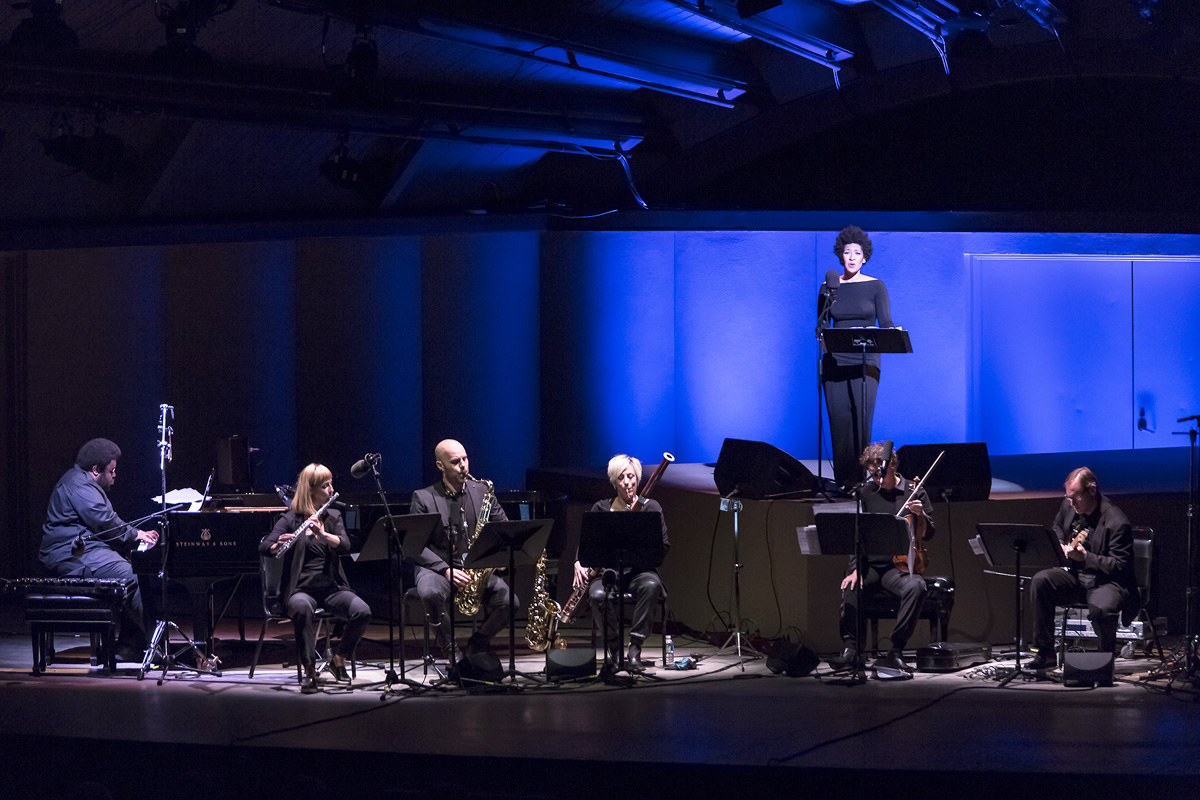
In the lead-up to the East Coast premiere of the Josephine Baker Project, The New York Times Zachary Woolfe sat down with Julia Bullock and Tyshawn Sorey to discuss the genesis and evolution of the project, and its particular importance at this moment in time. Read the full piece on the NY Times website or download a PDF >>
JULIA BULLOCK I had been wanting to sing her songs since college, which was the first time that anyone compared me to Baker. So I was just trying to find the right opportunity, the right person to arrange them, and the right context.
I performed a group of her songs in my New York debut recital, and Peter’s producer caught wind of it. And Peter said that if I would be interested in it, he was hooking up with Claire Chase [the International Contemporary Ensemble’s founder], and they brought Tyshawn on board and Claudia Rankine to write poetry. There was a part of me that didn’t know how much I wanted a white man grandfathering all this. But I think one of Peter’s great strengths is he brings together artists that seem to have a unique perspective and purpose . . .
Were you, are you, thinking about current events?
BULLOCK These issues, they’re always on my mind. When Michael Brown was killed, that happened 20 minutes from my home in St. Louis. All these issues are things I live with and think about daily. Yes, I understood the timeliness of what we were writing. Hearing her sing “Si J’Étais Blanche” [“If I Were White”] in 1925 is just as relevant as singing it now.
I’m half-white, and I thought it was really important as a performer to talk about my complex feelings about going into an industry predominately run by white people. Issues with exoticism still come up. Objectification still comes up. To have an opportunity to speak about that in music was great. I need to say those things right now, and the world needs to hear how I think. And to be given a platform to do it, it’s a gift both Tyshawn and I have been given.
SOREY The music that we make is comprised solely of our life experiences. The police brutality that we’re experiencing right now, it’s been happening for a very long time. I was born and raised in Newark, and police brutality and shootings happened near my block. The difference between then and now is that the media is talking about it. To do a reimagination of the Baker songs to me — even though the music per se might sound a particular way for a particular time — the lyrical content is timeless, and I wanted to create something musically to reflect what we’re experiencing now.
Is it still changing?
BULLOCK We’re all trying to share and experience and re-evaluate. So I can’t say when we’re going to have a finished product on this. I think everyone was in agreement that the first third of it, even though the music was amazing, needed to kind of get it going. So we’ve talked about establishing the relationship between Tyshawn and I, and having a more playful element to open it, creating a more welcoming space. And we’re always talking about what new songs to do .
2016 Audience Survey Results
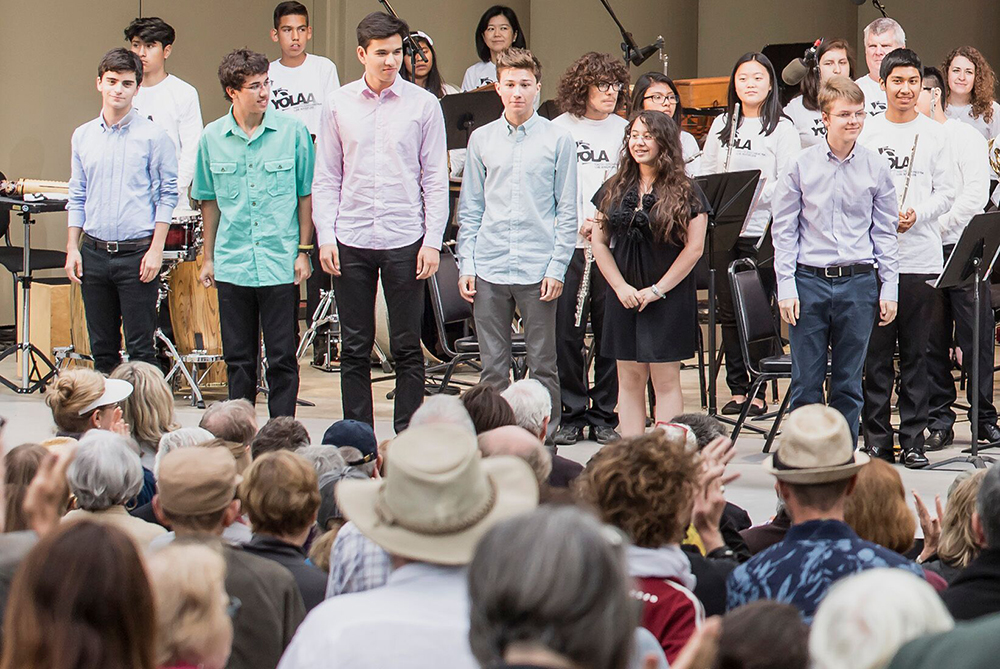
The Festival continues to be a place for experimentation and discovery for both artists and audiences. Each year after the Festival, we send out an electronic survey to ticket buyers. For those who participated, we thank you for taking the time to share your feedback about your experience.
As we continue to comb through the results and comments, we would like to share some initial findings.
We collected 931 emails of ticket buyers. 41% responded by completing the survey.
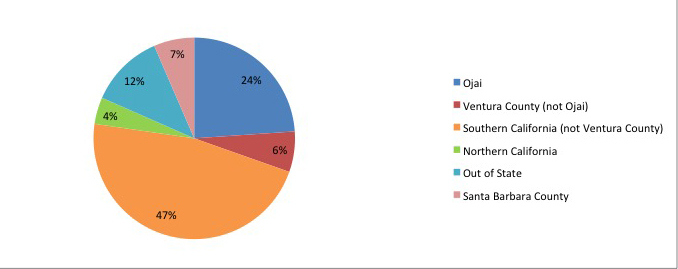
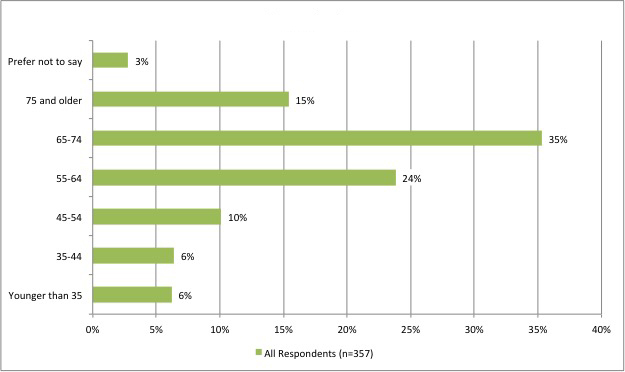
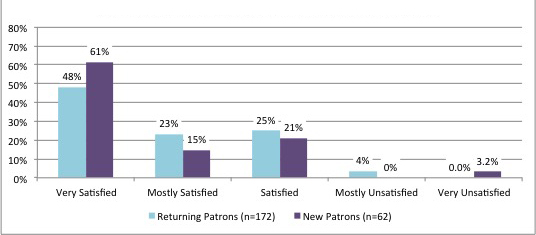
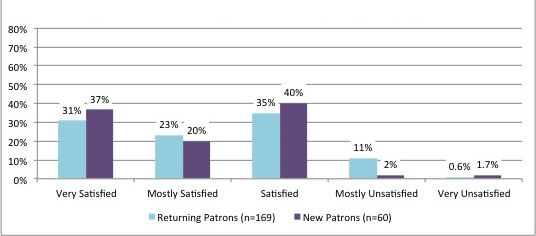
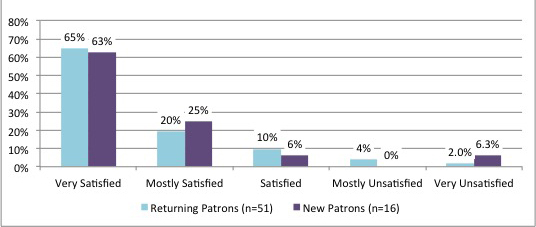
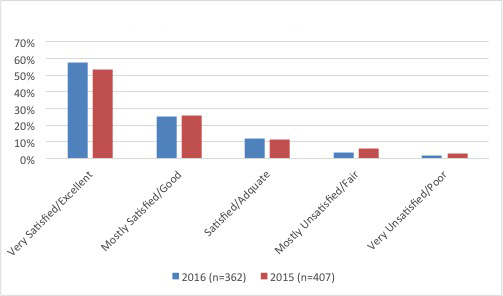
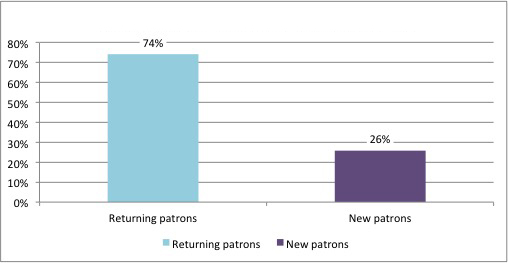
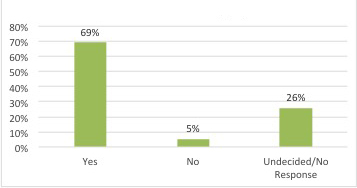
MEMORABLE MOMENTS…
Survey respondents also shared their memorable moments from the 2016 Festival. Here is a selection from both returning and new ticket buyers. Thank you for participating in our survey!
“This year’s festival introduced me to music and artists unfamiliar to me. It all excited me. I attended only the Thursday and Friday concerts and I am looking forward to streaming the concerts I missed. I loved the talks; they helped me understand the intentions of the composers as they created their pieces. Thank you Peter Sellers for an exquisite program!”
“Experiencing music within my community is so much richer than listening to music alone. The community, seeing friends and acquaintances, is as important as hearing the pieces.”
“Aruna Sriram was magnificent. I love and study Indian classical… It was great to be in the presence of a master.”
“Roomful of Teeth was truly exciting! Peter Sellar’s enthusiasm was contagious and inspiring!”
“The Friday June 10 ‘The Mystic House’ program with Caroline Shaw’s Partita for 8 Voices, and Carla Kihlstedt’s ‘All Night We Walk in Circles…’ was as electric, exciting and all-consuming a program as I have heard in years. I was totally absorbed musically and emotionally. I returned home on a cloud of inspiration and joy.”
“Davonne’s version of Caroline Shaw’s three songs: the reaction that Caroline displayed after having heard that performance of the songs she has heretofore sang herself was reflective of the high level of artistry of the people gathered for the Festival, and inventive programming provided the artists. It doesn’t get better than this, folks!”
“I found magnetic energy in the engagement of the audience. I will not forget the look on my young daughters face when Dina El Wedidi sang, with a voice clear and bright and so full of life.”
“Watching the Sunday afternoon performance of ICE and YOLA debut their collaborative graphic score with my 5-year-old son.”
“Seeing a female conducting a piece composed by a woman about Simone Weil featuring a woman of color as a soloist was just amazing. The talk beforehand was stunning. I can’t applaud the festival and Peter Sellars enough for choosing to foreground women. The fact that this year’s festival touched on both Simone Weil and Claudia Rankine is a testament to the depth of the artistry of all involved.”
“The friendliness, camaraderie of the Music Festival. It is truly like a big family!”
“I have enjoyed watching this festival evolve as I have attended off and on since high school in the 1960s to now and it just gets better.”
“The entire experience is unique and transporting. Maddening and magical.”
Vijay Iyer
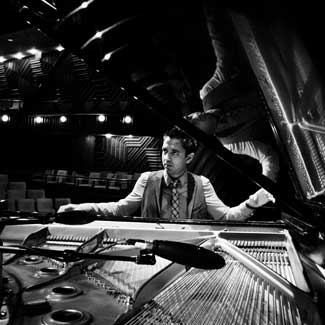
 71st Ojai Music Festival: June 8-11, 2017
71st Ojai Music Festival: June 8-11, 2017
Grammy-nominated composer-pianist Vijay Iyer (pronounced “VID-jay EYE-yer”) was described by Pitchfork as “one of the most interesting and vital young pianists in jazz today,” by the Los Angeles Weekly as “a boundless and deeply important young star,” and by Minnesota Public Radio as “an American treasure.” He has been voted DownBeat Magazine‘s Artist of the Year three times – in 2016, 2015 and 2012. Iyer was named Downbeat’s 2014 Pianist of the Year, a 2013 MacArthur Fellow, and a 2012 Doris Duke Performing Artist. In 2014 he began a permanent appointment as the Franklin D. and Florence Rosenblatt Professor of the Arts in the Department of Music at Harvard University.
The New York Times observes, “There’s probably no frame wide enough to encompass the creative output of the pianist Vijay Iyer.” Iyer has released twenty albums covering remarkably diverse terrain, most recently for the ECM label. The latest include A Cosmic Rhythm With Each Stroke (2016), a collaboration with Iyer’s “hero, friend and teacher,” Wadada Leo Smith, which the Los Angeles Times calls “haunting, meditative and transportive”; Break Stuff (2015), with a coveted five-star rating in DownBeat Magazine, featuring the Vijay Iyer Trio, hailed by PopMatters as “the best band in jazz”; Mutations (2014), featuring Iyer’s music for piano, string quartet and electronics, which “extends and deepens his range… showing a delicate, shimmering, translucent side of his playing” (Chicago Tribune); and Radhe Radhe: Rites of Holi (2014), “his most challenging and impressive work, the scintillating score to a compelling film by Prashant Bhargava” (DownBeat), performed by International Contemporary Ensemble and released on DVD and BluRay.
Relive The Festival Experience
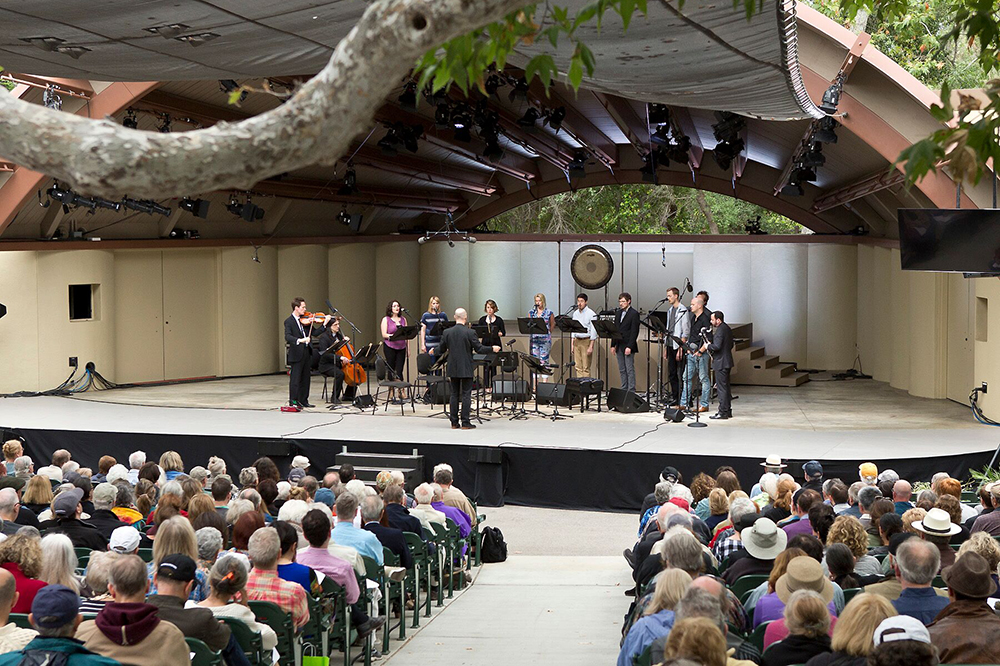
Watch videos of concerts and artist interviews from the 2016 Ojai Music Festival.
2016 Press Photos
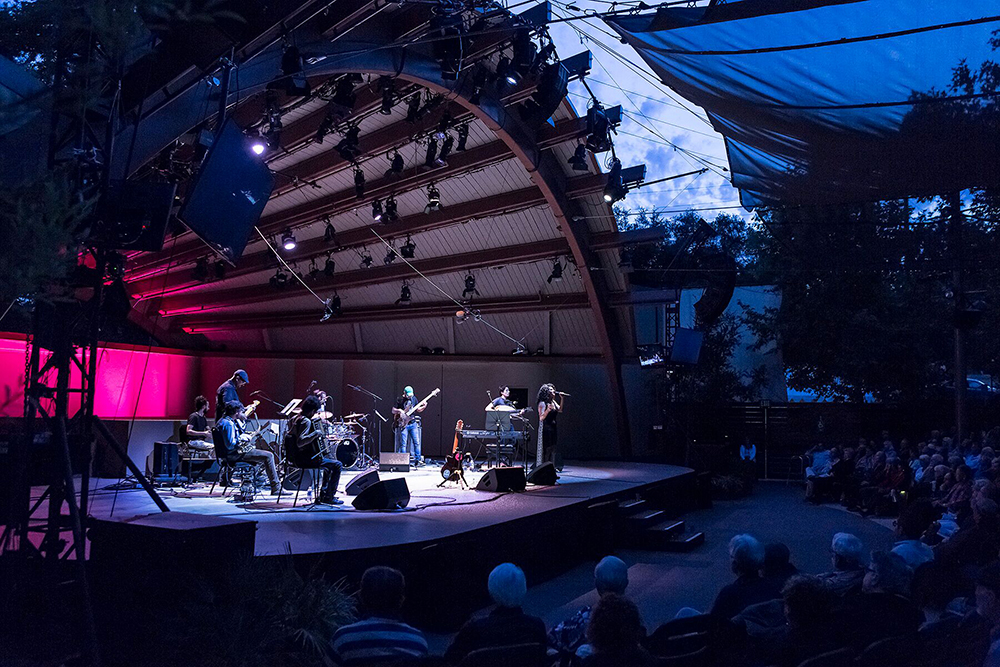
Check out concert photos from the 70th Ojai Music Festival! Photos captured by David Bazemore.
2016 Festival Reviews
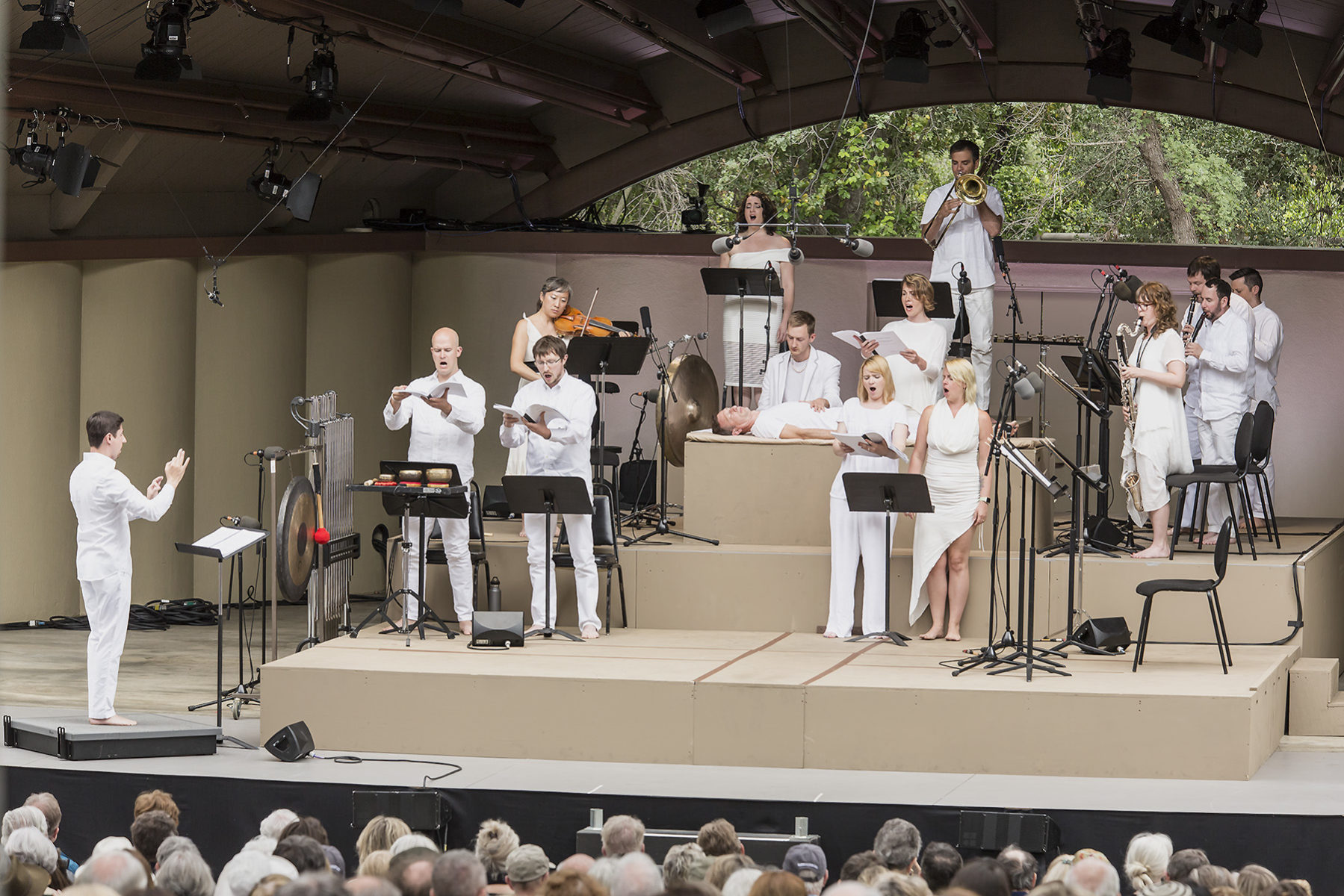
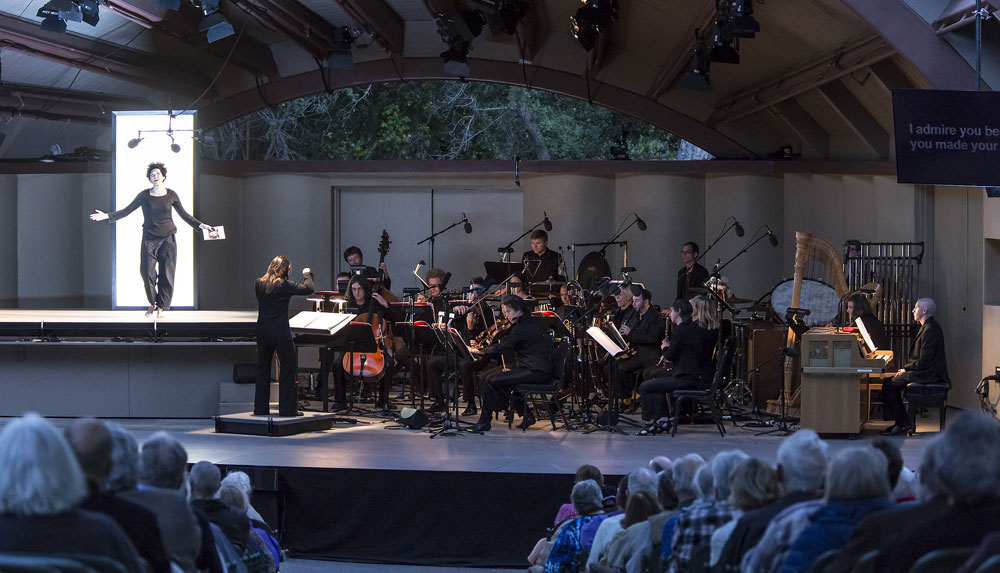
The 2016 Ojai Music Festival with Music Director Peter Sellars embodied the spirit of the Festival with an openness to exploration and risk-taking, adventure and surprise, embracing the new and welcoming the unfamiliar. Relive the 2016 Festival anytime by watching our archived live streaming concerts here.
Feedback from our audience, artists and members of the press is important to us. Read excerpts here or download the full PDF version.
In part because this 70-year-old festival’s musical leadership changes each year, its audience — loyal and attentive, with a bourgeois-bohemian vibe that aptly reflects the sheltered, fragrant Ojai — is unusually open to variation and exploration. And just four days long, the event is compact enough to give the sense that its offerings are the product of a single mind rather than a committee. This was Mr. Sellars’s personal playlist, leave it or — more often — take it. – The New York Times
As the great Southern California music retreat, the Ojai Music Festival offers venturesome refuge from normal life for locals and visitors to this blissed-out valley. – Los Angeles Times
Passion finds sustaining nourishment and intimacy in Saariaho’s exquisite chamber score, demonstrating her signature sensitivity to timbre and balance and offering affectingly dark-hued instrumental colorings – Musical America
The role of the work’s narrator (a fictitious sister for Weil created by the librettist, Amin Maalouf) was assumed by the rising soprano Julia Bullock, who lent the performance controlled vigor, tonal purity and fierce commitment – The Wall Street Journal
Her captivating Partita for 8 Voices was a close-harmony vocal exploration by Roomful of Teeth (in which Shaw is a vocalist) of four antique dances that sway and stretch in surprising and captivating contemporary ways. The work won the 2013 Pulitzer Prize for composition. Baritone Davóne Tines and the Calder Quartet’s later performance of Shaw’s By and By (freely set bluegrass and gospel texts) galvanized all present. In the fine acoustics of the Besant Hill School’s Zalk Theater, the rendering by Tines induced tears from many — the composer and Sellars himself among them. – Classical Voice North America
It is not only Saariaho’s work that is gripping, but the entire array of composers on “the front edge” of the next generation that Sellars celebrates. As it happens, most of those brought together for the festival are women, a disparate group with distinctive ideas for the future of music. They, and many of the performers, also represent many countries and multiple continents, brought together to illuminate musical possibilities for the 21st century. – Ventura County Star
If all this sounds like a recipe for confusion, that’s only partly the case. Despite his deliberately esoteric approach, there’s an emotional center to Vivier’s work that this performance managed to communicate very directly to the audience, and many were visibly moved by both the music and the occasion, proving once again that certain musical experiences could only happen in Ojai. – Santa Barbara Independent
Chase silently appeared on stage, an ominously chilly electronic soundscape rising in the background. She launched herself at a tam-tam, rattling and grinding metal sticks along the surface at full fury, before picking up her bass flute. Throwing her whole body into the music, slowly breathing in and whisper-shouting into her instrument, she demonstrated why she is truly one of the most vibrant performers on the concert stage. – I Care If You Listen
2016 Festival Moments
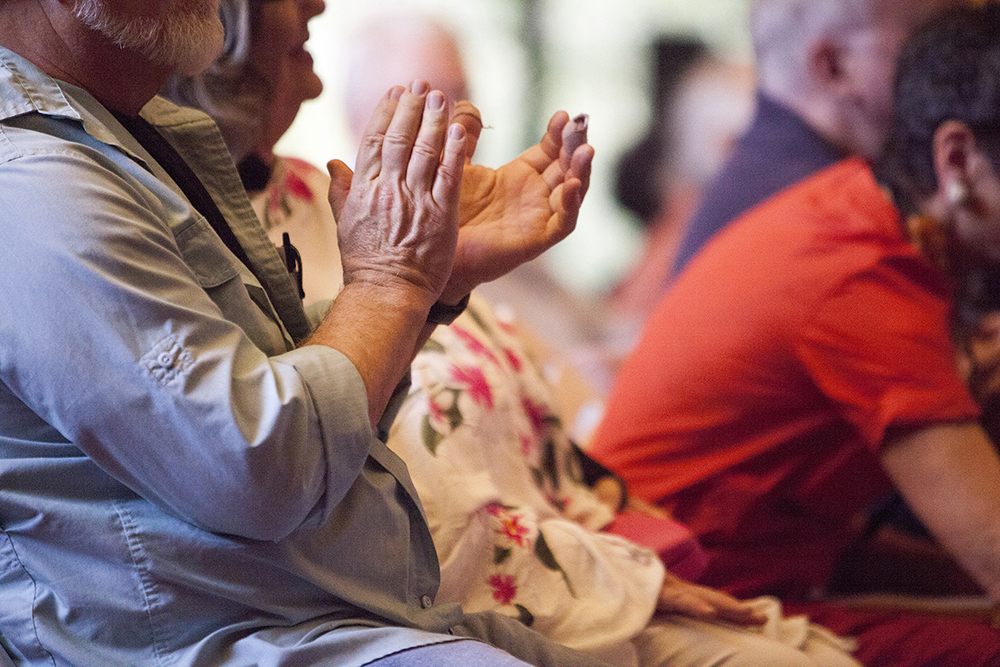
Taken through the lenses of Katurah Ashby and Salt Arts Documentation, here are some moments from the 70th Ojai Music Festival.
Ojai Live 2016
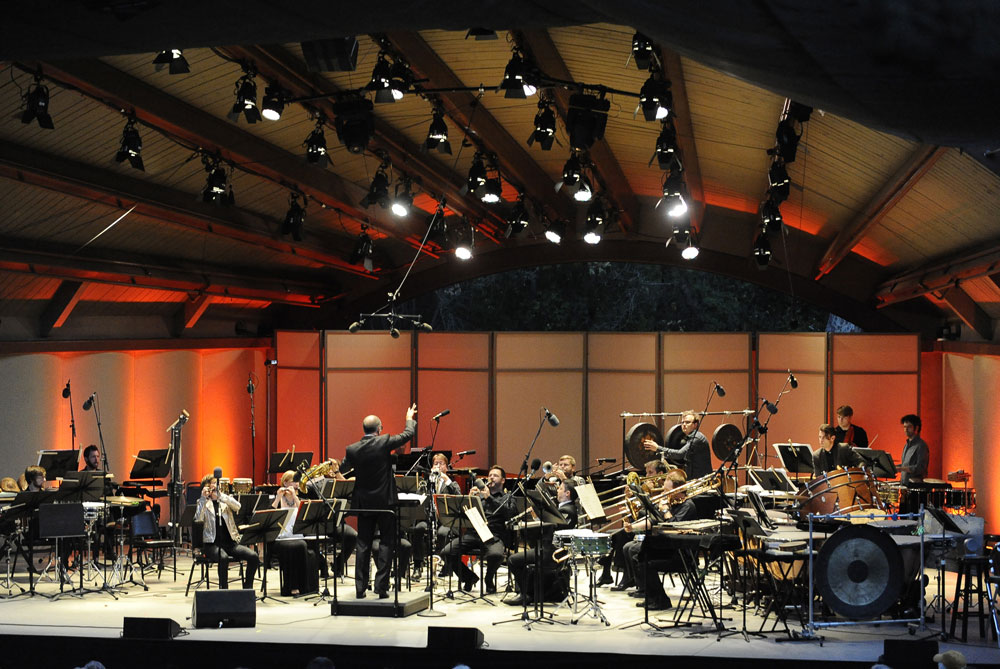
Use the player above and join us for Ojai Live 2016 to watch live streamed Festival concerts, interviews, and Talks online on your computer, phone, or tablet. Hosts for this year join us from Classical KUSC and include Executive Producer Gail Eichenthal, host Alan Chapman, and correspondents Craig Curtis and Thomas Kotcheff. Tune in at concert time to view live or use the live stream schedule to catch pre-recorded Festival events.
Schedule – All events live unless otherwise noted
View complete 2016 Festival Schedule
Thursday June 9, 2016 |Stream begins 5:00pm
- 5:00pm – Ojai Talks I
- 6:00pm – Ojai Talks II
- 7:00pm – Transformation Talks
- 7:45pm – Interview with Artistic Director Thomas W. Morris
- 8:00pm – Kaija Saariaho: La Passion de Simone
Friday June 10, 2016 | Stream begins 1:00pm
- 1:00pm – Kaija Saariaho Chamber Music I
- 2:00pm – Pauline Oliveros: Morning Meditations I (replay)
- 3:00pm – Mystic Hour I
- 4:00pm – Interview with ICE founder Claire Chase
- 4:30pm – Festival replays
- 7:00pm – Transformation Talks
- 7:40pm – Interview with Julia Bullock
- 8:00pm – Dina El Wedidi & Band
- 10:30pm – Ojai Late Night: Leila Adu
Saturday June 11, 2016 | Stream begins 12:00pm
- 12:00pm – Morning Ojai Extra (replay)
- 1:00pm – Kaija Saariaho Chamber Music II
- 2:00pm – Ojai Late Night: Leila Adu (replay)
- 3:00pm – Mystic Hour II
- 4:00pm – Kaija Saariaho Chamber Music I (replay)
- 6:30pm – Interview with Tyshawn Sorey
- 7:00pm – Transformation Talks
- 7:40pm – Interview with Andrew Bulbrooke of Calder Quartet
- 8:00pm – Aruna Sairam & Ensemble
- 9:30pm – Interview with Tania León
- 10:30pm: Josephine Baker Project (World Premiere)
Sunday June 12, 2016 | Stream begins 1:00pm
- 1:00pm – Free Family Concert
- 2:00pm – Festival replays
- 2:40pm – Interview with Aruna Sairam
- 3:00pm: Mystic Hour Concert
Thank you to the following 2016 Ojai Live Partners:
Marilyn Bremer Foundation
Little Dog Live
George Lewis, composer
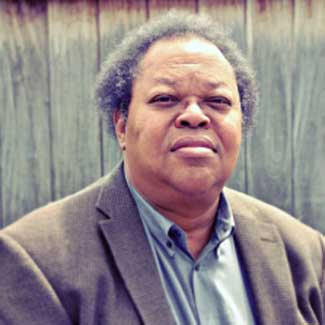

George E. Lewis is the Edwin H. Case Professor of American Music at Columbia University. A Fellow of the American Academy of Arts and Sciences and a Corresponding Fellow of the British Academy, Lewis’s other honors include a MacArthur Fellowship (2002), a Guggenheim Fellowship (2015), a United States Artists Walker Fellowship (2011), an Alpert Award in the Arts (1999), and fellowships from the National Endowment for the Arts.
Lewis studied composition with Muhal Richard Abrams at the AACM School of Music, and trombone with Dean Hey. A member of the Association for the Advancement of Creative Musicians (AACM) since 1971, Lewis’s work in electronic and computer music, computer-based multimedia installations, and notated and improvisative forms is documented on more than 150 recordings. His work has been presented by the BBC Scottish Symphony Orchestra, London Philharmonia Orchestra, Radio-Sinfonieorchester Stuttgart, Mivos Quartet, Boston Modern Orchestra Project, London Sinfonietta, Spektral Quartet, Talea Ensemble, Dinosaur Annex, Ensemble Pamplemousse, Wet Ink, Ensemble Erik Satie, Eco Ensemble, and others, with commissions from American Composers Orchestra, International Contemporary Ensemble, Harvestworks, Ensemble Either/Or, Orkestra Futura, Turning Point Ensemble, San Francisco Contemporary Music Players, 2010 Vancouver Cultural Olympiad, IRCAM, Glasgow Improvisers Orchestra, and others.
Lewis has served as Fromm Visiting Professor of Music, Harvard University; Ernest Bloch Visiting Professor of Music, University of California, Berkeley; Paul Fromm Composer in Residence, American Academy in Rome; Resident Scholar, Center for Disciplinary Innovation, University of Chicago; and CAC Fitt Artist in Residence, Brown University. Lewis received the 2012 SEAMUS Award from the Society for Electro-Acoustic Music in the United States, and his book, A Power Stronger Than Itself: The AACM and American Experimental Music (University of Chicago Press, 2008) received the American Book Award and the American Musicological Society’s Music in American Culture Award; Lewis was elected to Honorary Membership in the Society in 2016. Lewis is the co-editor of the two-volume Oxford Handbook of Critical Improvisation Studies (2016), and his opera Afterword (2015), commissioned by the Gray Center for Arts and Inquiry at the University of Chicago, has been performed in the United States, United Kingdom, and the Czech Republic. In 2015, Lewis received the degree of Doctor of Music (DMus, honoris causa) from the University of Edinburgh.
Read an interview with George Lewis on New Music Box >>
Visit George Lewis’ website >>
Photo credit: Emily Peragine
Brentano Quartet
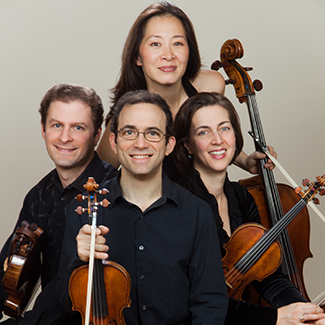
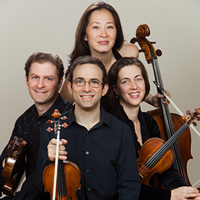 Since its inception in 1992, the Brentano Quartet has appeared throughout the world to popular and critical acclaim. “Passionate, uninhibited and spellbinding,” raves the London Independent; the New York Times extols its “luxuriously warm sound [and] yearning lyricism”; the Philadelphia Inquirer praises its “seemingly infallible instincts for finding the center of gravity in every phrase and musical gesture”; and the Times (London) opines, “the Brentanos are a magnificent string quartet…This was wonderful, selfless music-making.” Within a few years of its formation, the Quartet garnered the first Cleveland Quartet Award and the Naumburg Chamber Music Award; and in 1996 the Chamber Music Society of Lincoln Center invited them to be the inaugural members of Chamber Music Society Two, a program which was to become a coveted distinction for chamber groups and individuals. The Quartet had its first European tour in 1997, and was honored in the U.K. with the Royal Philharmonic Award for Most Outstanding Debut. That debut recital was at London’s Wigmore Hall, and the Quartet has continued its warm relationship with Wigmore, appearing there regularly and serving as the hall’s Quartet-in-residence in the 2000-01 season.
Since its inception in 1992, the Brentano Quartet has appeared throughout the world to popular and critical acclaim. “Passionate, uninhibited and spellbinding,” raves the London Independent; the New York Times extols its “luxuriously warm sound [and] yearning lyricism”; the Philadelphia Inquirer praises its “seemingly infallible instincts for finding the center of gravity in every phrase and musical gesture”; and the Times (London) opines, “the Brentanos are a magnificent string quartet…This was wonderful, selfless music-making.” Within a few years of its formation, the Quartet garnered the first Cleveland Quartet Award and the Naumburg Chamber Music Award; and in 1996 the Chamber Music Society of Lincoln Center invited them to be the inaugural members of Chamber Music Society Two, a program which was to become a coveted distinction for chamber groups and individuals. The Quartet had its first European tour in 1997, and was honored in the U.K. with the Royal Philharmonic Award for Most Outstanding Debut. That debut recital was at London’s Wigmore Hall, and the Quartet has continued its warm relationship with Wigmore, appearing there regularly and serving as the hall’s Quartet-in-residence in the 2000-01 season.
Cliff Colnot, conductor
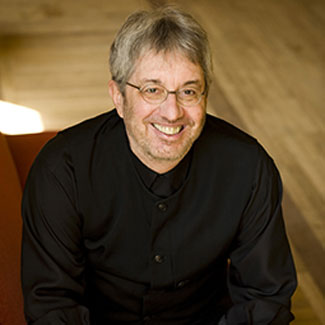
 In the past decade Cliff Colnot has emerged as a distinguished conductor and a musician of uncommon range. One of few musicians to have studied orchestral repertoire with Daniel Barenboim, Colnot has served as assistant conductor for Barenboim’s West-Eastern Divan Workshops for young musicians from Israel, Egypt, Syria, and other Middle Eastern countries. Colnot has also worked extensively with the late Pierre Boulez and served as assistant conductor to Boulez at the Lucerne Festival Academy. He regularly conducts the International Contemporary Ensemble (ICE), with whom he recorded Richard Wernick’s The Name of the Game for Bridge Records, and he collaborates with the internationally acclaimed contemporary music ensemble eighth blackbird.
In the past decade Cliff Colnot has emerged as a distinguished conductor and a musician of uncommon range. One of few musicians to have studied orchestral repertoire with Daniel Barenboim, Colnot has served as assistant conductor for Barenboim’s West-Eastern Divan Workshops for young musicians from Israel, Egypt, Syria, and other Middle Eastern countries. Colnot has also worked extensively with the late Pierre Boulez and served as assistant conductor to Boulez at the Lucerne Festival Academy. He regularly conducts the International Contemporary Ensemble (ICE), with whom he recorded Richard Wernick’s The Name of the Game for Bridge Records, and he collaborates with the internationally acclaimed contemporary music ensemble eighth blackbird.
Stephan Crump, bass
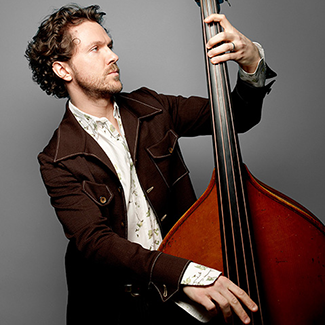
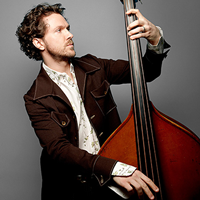 Memphis-bred, Grammy-nominated bassist/composer Stephan Crump has lived in Brooklyn since 1994. An active bandleader and composer, he has released ten critically-acclaimed albums in addition to numerous film scoring contributions. As bassist, known for transforming his instrument into a speaking entity of magnetic pull, his focus on creative instrumental music has led to collaborations with many of the leading lights of his generation.
Memphis-bred, Grammy-nominated bassist/composer Stephan Crump has lived in Brooklyn since 1994. An active bandleader and composer, he has released ten critically-acclaimed albums in addition to numerous film scoring contributions. As bassist, known for transforming his instrument into a speaking entity of magnetic pull, his focus on creative instrumental music has led to collaborations with many of the leading lights of his generation.
Shunning barriers of genre, Crump has performed and recorded with a diverse range of musicians, from Portishead’s Dave McDonald, The Violent Femmes’ Gordon Gano, to Patti Austin, Jim Campilongo, Jorma Kaukonen, Lucy Kaplansky, Big Ass Truck, Sonny Fortune, and late blues legend Johnny Clyde Copeland. Currently, he can be heard as a long-standing member of Vijay Iyer Trio and Sextet, Jen Chapin Band, Ches Smith Trio, Rez Abbasi Acoustic Quartet, Liberty Ellman Sextet, Secret Keeper (with Mary Halvorson), his own Rosetta Trio, as well as groups with Kris Davis, Ingrid Laubrock, Cory Smythe, Eric McPherson, Mat Maneri, and Okkyung Lee.




